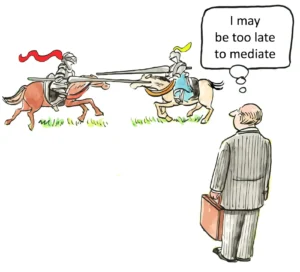Should I Accept the First Compensation Offer in a Personal Injury Case?
When faced with a personal injury claim, one of the most critical decisions you will make is whether to accept the first settlement offer presented by an insurance company. This initial proposal often comes at a vulnerable time—when medical bills are mounting, income may be reduced due to inability to work, and the stress of recovery weighs heavily. While the prospect of quick compensation might seem appealing, accepting the first offer without proper evaluation could result in significant financial shortfall that affects your long-term recovery and financial stability.
Insurance companies typically extend initial offers that fall well below the true value of valid claims. Their business model depends on minimizing payouts while closing cases quickly. Understanding this fundamental dynamic is essential before making any decision about a settlement proposal. The question of whether to accept a first offer requires careful consideration of numerous factors, including the full extent of your injuries, future medical needs, lost earning capacity, and the strength of your legal position.
Why Insurance Companies Make Low Initial Offers
Insurance companies operate as profit-driven businesses with clear financial incentives to minimize claim payouts. Their first offers typically represent strategic starting points designed to test a claimant’s knowledge, patience, and financial pressure. These initial proposals rarely reflect the true value of a claim, but rather serve as the opening move in what insurers expect to be a negotiation process.
Claims adjusters receive training to resolve cases quickly and economically. They understand that many injured parties face immediate financial pressure from medical bills and lost wages, creating vulnerability that can be leveraged to secure fast, low-cost settlements. By presenting what appears to be a reasonable sum when finances are tight, they capitalize on the natural desire for quick resolution. This approach proves particularly effective with unrepresented claimants who lack experience evaluating the true worth of their cases.
Furthermore, insurance companies benefit from information asymmetry in the early stages of a claim. While they possess extensive data on case values and settlement statistics, most claimants have no frame of reference for what constitutes fair compensation. This knowledge gap allows adjusters to present lowball offers with confidence, knowing many recipients lack the resources to properly evaluate them. This systematic approach to claims handling explains why first offers typically represent only a fraction of what might ultimately be recovered through proper negotiation or litigation.
The True Value of Your Personal Injury Claim
Determining the genuine worth of a personal injury case requires comprehensive analysis that extends far beyond immediate medical expenses. A properly valued claim incorporates multiple damage categories, including past and future medical treatment, lost income, diminished earning capacity, property damage, and non-economic damages like pain and suffering. Each component requires careful documentation and, often, expert evaluation to establish accurate figures.
Medical expenses represent just the starting point for claim valuation. Beyond current bills, you must consider future treatment needs, which might include surgeries, physical therapy, medication, assistive devices, or long-term care. Medical experts often provide testimony regarding anticipated treatment requirements and costs. Similarly, economic experts may need to calculate the present value of future lost earnings, particularly in cases involving permanent disability or diminished work capacity. These projections require sophisticated analysis of employment history, education, industry trends, and life expectancy.
Non-economic damages present particular valuation challenges, as they compensate for intangible losses like physical pain, emotional suffering, loss of enjoyment of life, and relationship impacts. While no precise formula exists for calculating these damages, they often constitute a substantial portion of personal injury recoveries. Insurance companies typically undervalue these components in initial offers, knowing they’re more difficult to quantify. A comprehensive claim valuation requires careful consideration of how injuries have affected all aspects of your life, supported by appropriate documentation and testimony.
The Timing Problem: Accepting Offers Too Early
Accepting a settlement offer before understanding the full extent of your injuries represents one of the most common and costly mistakes in personal injury cases. Many injuries evolve over time, with complications, secondary conditions, or unexpected recovery challenges emerging weeks or months after the initial incident. Once you accept a settlement and sign a release, you permanently forfeit the right to seek additional compensation, even if your condition deteriorates significantly.
Medical professionals often cannot provide definitive prognoses until patients reach “maximum medical improvement” (MMI)—the point at which their condition has stabilized and future treatment needs become clearer. Settling before reaching MMI essentially requires guessing about future medical requirements, a gamble that rarely favors the injured party. This timing problem proves particularly significant with traumatic brain injuries, spinal damage, complex fractures, and other conditions where long-term outcomes remain uncertain during early treatment phases.
The pressure to accept early offers intensifies when financial strain accompanies serious injuries. Medical bills, mortgage payments, and basic living expenses continue while income may be reduced or eliminated. Insurance adjusters understand these pressures and sometimes exploit them by suggesting that early acceptance represents the only opportunity for compensation. However, various resources exist to manage financial challenges during claim pendency, including medical liens, disability benefits, and litigation funding. These options can provide breathing room to pursue full compensation rather than accepting inadequate early offers out of financial necessity.
Understanding Insurance Company Tactics
Insurance companies employ sophisticated strategies designed to minimize payouts across their entire claims portfolio. Recognizing these tactics helps claimants make more informed decisions when evaluating settlement offers. One common approach involves quick, seemingly generous offers extended before claimants have legal representation or complete medical information. These “swoop and settle” tactics aim to resolve potentially expensive claims before their full value becomes apparent.
Another prevalent strategy involves prolonged delays and documentation demands that create financial pressure on claimants. By stretching the claims process while questioning medical necessity, causation, or coverage, insurers increase the likelihood that financial desperation will force acceptance of lower offers. Some adjusters also employ strategic friendliness, presenting themselves as advocates while actually serving company interests. This approach can dissuade claimants from seeking independent legal advice that might reveal the inadequacy of offered settlements.
Insurance representatives sometimes misrepresent legal realities to influence settlement decisions. They might suggest that certain damages aren’t recoverable, that deadlines are approaching, or that litigation would certainly yield worse results than their offer. Without independent legal knowledge, claimants may accept these assertions at face value. Understanding that these tactics represent calculated business strategies rather than good-faith claim evaluation helps maintain proper perspective when considering initial offers.
The Role of a Personal Injury Attorney in Evaluating Offers
Engaging a personal injury lawyer fundamentally changes the dynamics of settlement negotiations and significantly improves the likelihood of fair compensation. Experienced attorneys bring critical knowledge regarding case valuation, negotiation strategies, and litigation procedures that most claimants simply don’t possess. This expertise helps level the playing field against insurance companies with their vast resources and institutional knowledge.
Attorneys contribute value throughout the claims process, beginning with comprehensive case evaluation. They identify all potential damage categories, responsible parties, and insurance coverages while assessing liability strengths and weaknesses. This analysis provides a realistic framework for evaluating settlement offers against likely litigation outcomes. During negotiations, attorneys leverage their knowledge of similar case results, judicial tendencies, and defense strategies to counter lowball offers with persuasive arguments and supporting evidence.
Perhaps most importantly, representation shifts the financial calculation for insurance companies. Unrepresented claimants typically receive offers based on what adjusters believe they might accept rather than what their cases are worth. When experienced counsel becomes involved, insurers must consider the increased likelihood of litigation and the potential for substantial verdicts exceeding initial settlement authority. This recalculation often produces dramatically improved offers, even after accounting for attorney contingency fees. Studies consistently show that represented claimants recover significantly more compensation than those who negotiate directly with insurers, even considering legal fees.
Evaluating the Strength of Your Case
The strength of your liability claim significantly impacts appropriate settlement evaluation. Cases with clear liability, substantial damages, and straightforward causation typically command higher settlements than those with contested fault or complex medical issues. Understanding your case’s strengths and weaknesses provides essential context for evaluating any settlement offer.
Liability assessment examines the evidence establishing the defendant’s responsibility for your injuries. Strong cases feature clear negligence documentation, multiple supporting witnesses, definitive physical evidence, or statutory violations. Conversely, contributory negligence, evidence gaps, or conflicting accounts may weaken your position. Similarly, causation strength depends on the directness of the connection between the defendant’s actions and your specific injuries. Pre-existing conditions, delayed treatment, or alternative explanations for symptoms can complicate this element.
Damage documentation quality also substantially affects case strength. Comprehensive medical records, consistent treatment, clear physician opinions, and well-documented economic losses strengthen your position. Conversely, treatment gaps, inconsistent complaints, or poorly documented damages may undermine recovery potential. Experienced attorneys evaluate these factors to assess case strength realistically, providing context for determining whether initial offers reflect appropriate risk discounting or merely opportunistic undervaluation.
The Negotiation Process After Rejecting Initial Offers
Rejecting an initial offer typically initiates a structured negotiation process rather than ending settlement opportunities. Understanding this process helps claimants maintain appropriate expectations and strategic patience. Effective negotiations generally begin with a comprehensive demand package presenting all liability evidence, medical documentation, and economic loss verification, accompanied by a demand figure that accounts for all damage categories.
Insurance responses to demands vary based on case strength, company practices, and assigned adjuster authority. Some insurers respond with modest increases while others maintain their position, requiring multiple negotiation rounds to achieve significant movement. Throughout this process, new information often emerges through additional medical reports, expert opinions, or investigation results, potentially strengthening your position. Patience during these exchanges typically yields better results than rushing to resolution, particularly when supported by thorough documentation and persuasive advocacy.
Settlement discussions may occur through various formats, including written exchanges, telephone conferences, or formal mediation sessions. Mediation, involving a neutral third-party facilitator, often proves particularly effective for resolving complex cases. This structured negotiation environment allows for nuanced discussion of case strengths and weaknesses while maintaining focus on resolution. Throughout any negotiation format, maintaining realistic expectations based on case-specific factors rather than general principles or anecdotal experiences supports sound decision-making about whether improved offers represent fair value.
When Litigation Becomes Necessary
When negotiations fail to produce reasonable settlement offers, filing a lawsuit may become necessary to pursue fair compensation. Understanding the litigation process helps claimants make informed decisions about proceeding beyond pre-suit negotiations. While most filed cases still resolve before trial, the litigation framework provides additional leverage and information-gathering tools that often facilitate improved settlements.
The formal discovery process represents a significant litigation advantage, allowing your attorney to obtain evidence through depositions, document requests, interrogatories, and expert examinations. These procedures often reveal information unavailable during pre-suit negotiations, potentially strengthening your position. Additionally, court-imposed deadlines and trial settings create decision points that frequently motivate more reasonable settlement offers as insurance companies face increased expense and uncertainty.
Litigation does involve trade-offs, including increased time to resolution, higher expenses, and greater personal involvement in providing testimony and attending proceedings. However, these considerations must be balanced against the potential for substantially improved outcomes in cases where initial offers reflect significant undervaluation. Experienced attorneys provide guidance about when these trade-offs justify proceeding to litigation based on case-specific factors rather than general principles.
The Impact of Medical Treatment Decisions on Settlement Value
Your medical treatment choices significantly influence both your physical recovery and your claim’s settlement value. Consistent, appropriate care documented by qualified providers establishes both the existence and extent of your injuries while demonstrating reasonable mitigation efforts. Conversely, delayed treatment, inconsistent follow-up, or provider hopping may substantially undermine your claim regardless of actual injury severity.
Following treatment recommendations demonstrates commitment to recovery while creating comprehensive documentation of your condition’s progression. This documentation proves particularly important for injuries involving soft tissue damage, concussions, or other conditions not readily visible on imaging studies. When symptoms persist despite appropriate treatment, this consistent care history strengthens causation arguments and supports claims for ongoing damages that might otherwise face skepticism.
Treatment choices also affect settlement timing considerations. Resolving claims before reaching maximum medical improvement or completing recommended treatment courses creates substantial uncertainty about future needs. This uncertainty typically benefits insurers rather than claimants, as settlement releases preclude additional compensation regardless of subsequent developments. Balancing treatment completion against financial pressures requires careful consideration, ideally with both medical and legal guidance about the implications of timing decisions.
Understanding Comparative Negligence and Its Impact on Offers
Many jurisdictions apply comparative negligence principles that reduce recovery based on the claimant’s percentage of fault for causing their injuries. Insurance companies frequently cite potential comparative negligence as justification for reduced offers, sometimes overstating its likely impact to leverage settlement negotiations. Understanding how these principles apply in your jurisdiction and your specific case provides important context for evaluating settlement proposals.
Comparative negligence assessment examines each party’s actions contributing to the incident and assigns proportional responsibility. For example, a driver might bear primary responsibility for running a red light while the injured pedestrian might share minor fault for crossing outside a crosswalk. The precise impact of such determinations varies by jurisdiction. Pure comparative negligence states reduce recovery directly by the plaintiff’s fault percentage, while modified comparative systems may bar recovery entirely when plaintiff fault exceeds certain thresholds.
Evaluating comparative negligence arguments requires objective assessment of the evidence rather than accepting insurance characterizations. Adjusters often emphasize potential plaintiff fault while minimizing defendant negligence, presenting unbalanced assessments that justify lower offers. Independent evaluation of police reports, witness statements, physical evidence, and applicable laws helps determine whether comparative negligence discounts in settlement offers accurately reflect litigation risk or merely serve as negotiation tactics.
The Role of Insurance Policy Limits in Settlement Offers
Insurance policy limits often significantly influence settlement offers, particularly in serious injury cases where damages may exceed available coverage. These contractual maximums represent the insurer’s highest possible exposure regardless of actual damages, creating artificial ceilings on recoverable amounts from specific coverage sources. Understanding these limitations provides essential context for evaluating whether initial offers reflect fair value within existing constraints or merely opportunistic undervaluation.
When damages potentially exceed policy limits, insurers face competing considerations. Their contractual obligation to policyholders includes protection against personal exposure beyond coverage limits, which may motivate policy-limits settlements in clear liability cases. Conversely, when liability remains contested or damages appear containable within limits, insurers typically offer below-limit settlements reflecting their assessment of litigation risk discounted value.
Policy limit constraints require careful consideration of all potential recovery sources. These might include multiple coverage types (liability, umbrella, uninsured/underinsured motorist), additional defendants with separate policies, or personal assets beyond insurance protection. Identifying all potential recovery sources helps determine whether initial offers represent appropriate resolutions given available coverage or merely preliminary proposals within broader compensation possibilities.
The Impact of Pre-Existing Conditions on Settlement Offers
Pre-existing conditions frequently complicate personal injury claims and often serve as justification for reduced settlement offers. Insurance companies typically argue that symptoms attributed to the incident actually stem from prior conditions, thereby limiting their responsibility to any demonstrable worsening rather than the entire condition. Understanding how these arguments affect case valuation helps evaluate whether condition-based discounts in settlement offers reflect reasonable assessments or opportunistic devaluation.
The legal principle of “taking the plaintiff as you find them” generally holds defendants responsible for all consequences of their negligence, even when unique plaintiff characteristics result in more severe outcomes than might occur with different victims. This “eggshell plaintiff” doctrine means that pre-existing conditions making someone more vulnerable to injury don’t necessarily reduce recovery. However, defendants remain responsible only for changes or aggravations to existing conditions rather than their original development.
Distinguishing between pre-existing asymptomatic conditions and those causing active symptoms before the incident significantly affects appropriate valuation. When previously asymptomatic conditions become symptomatic following trauma, stronger arguments exist for attributing the entire symptomatic condition to the incident. Conversely, when distinguishing between pre-incident and post-incident symptoms proves difficult, settlement value typically decreases to reflect this causation uncertainty. Medical documentation quality, including detailed pre-incident and post-incident condition comparisons, substantially influences how these issues affect appropriate settlement evaluation.
The Emotional Aspects of Settlement Decisions
Settlement decisions involve significant emotional components beyond purely financial calculations. Many claimants experience complex feelings about resolving claims, including desires for acknowledgment, justice, closure, or vindication that monetary offers may not fully satisfy. Understanding these emotional aspects helps maintain perspective when evaluating whether settlement proposals serve your overall interests rather than merely financial considerations.
For some individuals, proceeding through complete litigation represents an important opportunity to have their experiences fully acknowledged through formal proceedings, regardless of financial outcomes. Others prioritize closure and moving forward, finding that prolonged legal proceedings extend psychological impacts by maintaining focus on traumatic events. Neither approach is inherently superior; both represent legitimate personal priorities that should inform settlement decisions alongside financial considerations.
The emotional toll of ongoing claims also warrants consideration when evaluating settlement timing. Litigation stress affects different individuals differently, potentially impacting recovery, relationships, and overall wellbeing. While these impacts shouldn’t force premature settlement acceptance, they represent legitimate factors when balancing the potential benefits of continued proceedings against their personal costs. Honest self-assessment about these emotional aspects supports decision-making aligned with your comprehensive interests rather than narrowly financial considerations.
Future Medical Needs and Settlement Evaluation
Accurately projecting future medical expenses represents one of the most challenging and consequential aspects of settlement evaluation. Unlike past expenses documented through existing bills, future needs require informed prediction based on current medical assessments, statistical outcomes, and treatment protocols. These projections significantly impact appropriate settlement value, particularly in cases involving permanent injuries, ongoing treatment requirements, or potential complications.
Medical experts play crucial roles in establishing future care needs, typically through detailed life care plans outlining anticipated treatments, medications, therapies, assistive devices, and accommodations throughout the claimant’s life expectancy. These projections require specialized expertise regarding both medical treatment protocols and their associated costs. When properly developed, such plans provide substantiated bases for future medical components of settlement demands rather than speculative estimates.
Insurance offers frequently undervalue future medical needs through various approaches, including assuming shorter treatment durations, disregarding potential complications, or applying excessive present-value discounting. Evaluating whether initial offers adequately account for these future needs requires careful comparison between expert projections and settlement components. This assessment proves particularly important before accepting any settlement, as post-resolution medical complications become the claimant’s financial responsibility regardless of whether the settlement adequately anticipated them.
The Impact of Case Publicity and Privacy Considerations
Public attention sometimes influences settlement dynamics, particularly in cases involving notable incidents, parties, or legal issues. While most personal injury matters proceed without significant public attention, understanding how publicity potentially affects settlement offers provides additional context for evaluation in applicable cases. These considerations may either increase or decrease appropriate settlement values depending on specific circumstances.
For defendants concerned about reputation damage, publicity motivation sometimes increases settlement offers beyond amounts typically available for similar injuries. This premium reflects the defendant’s interest in resolving matters quickly and confidentially rather than risking extended public attention through protracted litigation. Conversely, some defendants resist settlement specifically to avoid creating perception of liability admission, particularly when facing multiple similar claims or precedent concerns.
Privacy considerations extend beyond publicity to confidentiality provisions frequently included in settlement agreements. These provisions typically prohibit disclosing settlement terms and sometimes restrict discussing incident facts or allegations. While such provisions facilitate resolution by addressing defendant confidentiality concerns, they sometimes create difficult value trade-offs for claimants who prioritize public accountability or warning others about similar dangers. Evaluating whether such restrictions warrant settlement discounting or premium depends on individual priorities regarding privacy versus transparency.
Tax Implications of Personal Injury Settlements
Tax considerations represent frequently overlooked factors when evaluating settlement offers. While personal injury compensatory damages for physical injuries generally receive favorable tax treatment, other settlement components may create significant tax liabilities that effectively reduce net recovery. Understanding these distinctions helps evaluate whether nominal settlement amounts translate to expected after-tax recovery.
Compensation for physical injuries and physical sickness, including related pain and suffering, typically qualifies for income tax exclusion under Internal Revenue Code Section 104(a)(2). However, this exclusion specifically doesn’t extend to punitive damages, interest components, or compensation for purely emotional injuries without physical manifestations. These non-excluded components create ordinary income tax liability that substantially reduces their effective value compared to tax-exempt components.
Settlement allocation among different damage categories significantly affects tax treatment, making allocation negotiations important beyond mere categorization. While parties cannot simply relabel punitive damages as compensatory to secure tax advantages, legitimate allocation among different compensatory components based on reasonable claim valuation may optimize tax treatment. Consulting with tax professionals about these implications before finalizing significant settlements helps ensure that acceptance decisions reflect accurate after-tax recovery expectations rather than potentially misleading pre-tax figures.
The Impact of Liens and Subrogation on Settlement Value
Medical liens and subrogation claims frequently reduce net recovery from personal injury settlements, sometimes substantially. These third-party reimbursement rights entitle healthcare providers, insurers, or government programs to recover their expenditures from settlement proceeds before the injured party receives remaining funds. Understanding these obligations helps evaluate whether settlement offers will provide expected compensation after satisfying all reimbursement requirements.
Healthcare provider liens, health insurance subrogation rights, Medicare/Medicaid recovery claims, and workers’ compensation liens represent common reimbursement obligations affecting personal injury recoveries. These claims vary significantly in their legal strength, reduction potential, and procedural requirements. Some jurisdictions limit certain recovery rights through made-whole doctrines or statutory restrictions, while others enforce them fully regardless of settlement adequacy.
Lien resolution often involves significant negotiation opportunities that substantially affect net recovery. Many lien holders routinely accept reduced reimbursement to facilitate settlements, particularly when recovery limitations exist. These reduction possibilities should factor into settlement evaluation, as nominal offer amounts may yield substantially different net recoveries depending on lien negotiation success. Experienced attorneys typically address these obligations proactively throughout case development rather than discovering their impact only after settlement acceptance.
Conclusion: Making an Informed Decision
Deciding whether to accept an initial settlement offer requires balancing numerous factors specific to your situation rather than following general rules. While first offers typically represent starting points rather than fair value, exceptions exist based on case-specific circumstances including liability strength, damages documentation, coverage limitations, and individual priorities. The key lies in making fully informed decisions rather than reacting to financial pressure or incomplete information.
Taking time to understand your case’s true value through proper medical evaluation, comprehensive damages documentation, and expert legal assessment provides the foundation for sound settlement decisions. This informed perspective helps distinguish between reasonable offers that reflect case realities and opportunistic proposals exploiting knowledge or leverage imbalances. While perfect certainty never exists in litigation, thorough evaluation substantially improves decision quality regardless of whether you ultimately accept, reject, or counter any particular offer.
The settlement decision ultimately remains yours rather than your attorney’s, insurance company’s, or anyone else’s. Your
Citations:
- https://tomjacksonlaw.com/2023/06/28/why-you-should-never-accept-the-first-offer-in-a-personal-injury-case/
- https://www.missourilawyers.com/why-you-shouldnt-accept-the-first-settlement-offer-advice-from-a-st-louis-personal-injury-lawyer/
- https://www.novalegalgroup.com/should-i-accept-the-first-settlement-offer-from-the-insurance-company/
- https://www.williamspa.com/blog/why-you-should-never-accept-the-first-offer-from-an-insurance-company/
- https://visionarylawgroup.com/effective-strategies-to-combat-lowball-offers-in-accident-settlements/
- https://www.rosenbaumnylaw.com/resources/understanding-negotiation-in-personal-injury-cases/
- https://wfirm.com/pro-tips-to-maximize-personal-injury-compensation/
- https://ekjlaw.com/5-new-trends-impacting-personal-injury-cases/
- https://saslawgroup.com/personal-injury/looking-forward-personal-injury-legal-trends-for-2024/
- https://plebanlaw.com/the-future-of-personal-injury-law-trends-and-changes/
- https://geraldmarcuslaw.com/why-you-shouldnt-accept-the-first-settlement-offer-insights-from-a-los-angeles-personal-injury-lawyer/
- https://www.olympiainjurylawyer.com/9-tips-for-negotiating-the-maximum-personal-injury-settlement/
- https://www.thehadilawfirm.com/top-personal-injury-trends-to-watch-in-2025/
- https://www.lawyer-monthly.com/2023/04/current-trends-in-personal-injury-claims-and-their-impacts-on-compensation/
- https://www.forbes.com/advisor/legal/personal-injury/personal-injury-settlement-amounts/
- https://www.bismarck-attorneys.com/blog/2025/01/the-risk-of-accepting-the-initial-settlement-for-a-minor-injury/
- https://greenvillelegal.com/how-to-respond-to-a-low-settlement-offer/
- https://www.brandonjbroderick.com/should-i-accept-first-settlement-offer-my-personal-injury-case
- https://www.gjel.com/personal-injury/uncovering-the-truth-why-insurance-companies-often-try-to-minimize-payouts
- https://gemmalaw.com/blog/how-to-respond-to-first-personal-injury-settlement-offer-in-rhode-island/
- https://www.londonharker.com/blog/responding-to-low-insurance-settlement-offer/
- https://www.callahan-law.com/how-insurance-companies-handle-high-value-claims/
- https://hhjtrialattorneys.com/accept-the-first-settlement-offer-from-insurance-company/
- https://www.dontgethittwice.com/blog/2025/january/how-to-handle-lowball-settlement-offers-from-pro/
- https://shakedlaw.com/blog/10-tips-for-maximizing-compensation-in-your-personal-injury-case-in-miami-fl/
- https://baumgartnerlawyers.com/helpful-information/negotiation/
- https://www.askadamskutner.com/las-vegas-personal-injury-lawyers/10-tips-maximizing-compensation-personal-injury-case/
- https://www.justia.com/injury/settlement-negotiations-in-personal-injury-cases/
- https://www.nolo.com/legal-encyclopedia/negotiating-with-insurance-company-29765.html
- https://pisanchynlawfirm.com/whats-new/staying-ahead-in-personal-injury-law-key-trends-to-watch-in-2025/
- https://www.runsensible.com/blog/personal-injury-law-statistics/


















